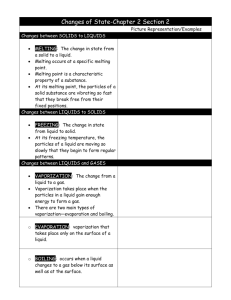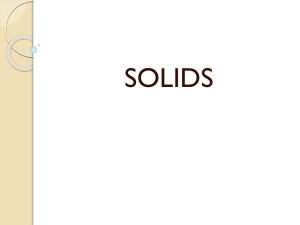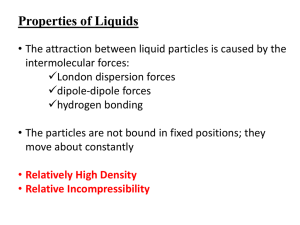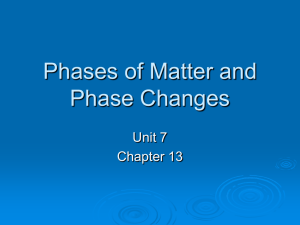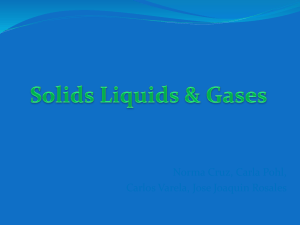States of Matter
advertisement
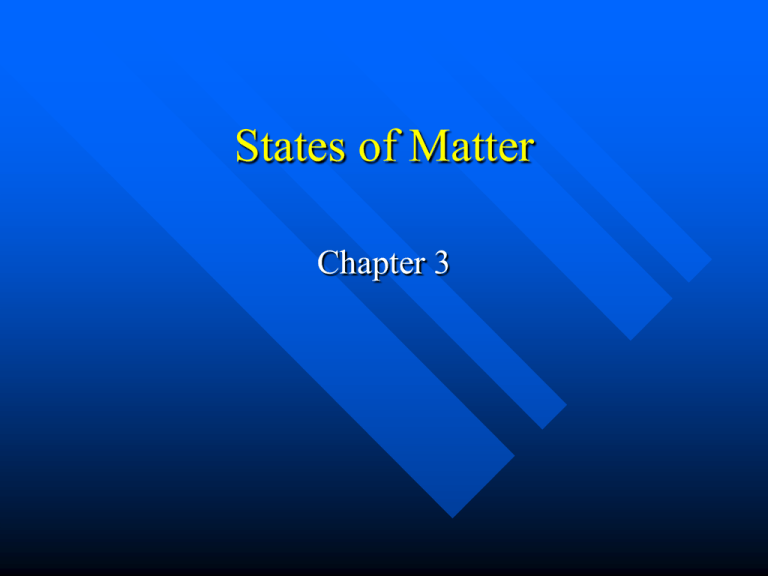
States of Matter Chapter 3 States of Matter Solid Has a definite shape and a definite volume Examples Ice Rocks Your pencil A baseball States of matter A fixed closely packed arrangement of particles There are 2 types of solids States of Matter Amorphous solid The particles are not arranges in a regular pattern Examples Plastic Rubber Glass States of Matter Crystalline Solid Solids that are made up of crystal It will melt at a specific temperature Examples Salt Sugar Ice States of Matter Liquid Has a definite shape and volume but does not have a shape of its own Has a constant volume no matter what its shape States of matter Liquids are also called Fluids a substance that flows Examples Water milk oil States of Matter Properties of Liquids Surface tension An inward pull that brings the liquid molecules closer together States of Matter Viscosity resistance to flow. It depends on the size and shape of the fluids molecules and attraction between particles States of Matter Gas Does not have a definite shape or a definite volume. It will fill the space available to it Changes between a solid and a liquid Melting Change from a state of a solid to a liquid Melting Point The specific temperature at which melting occurs Changes between a solid and a liquid At its melting point the particles of a solid substance are vibrating so fast that they break free from their fixed positions Water is 0º C Changes between a solid and a liquid Freezing The change in state from a liquid to a solid At its freezing temperature the particles of a liquid are moving so slowly that they begin to form regular patterns (crystallize) Changes Between Liquids and a Gas Vaporization Change from a liquid to a gas Vaporization occurs when the particles of a liquid gain enough energy to form a gas Changes Between Liquids and a Gas Evaporation Vaporization that takes place at the surface of a liquid The liquid may gain energy from the ground, air or the sun Changes Between Liquids and a Gas Boiling Occurs when a liquid changes into a gas below the surface as well as at the surface of a liquid. Boiling point The temperature at which liquid boils Changes Between Liquids and a Gas Condensation The opposite of vaporization when a gas becomes a liquid. Loss of thermal energy Changes Between Solid and a Gas Sublimation when the surface particles gain enough energy that they skip the liquid phase and become a gas
